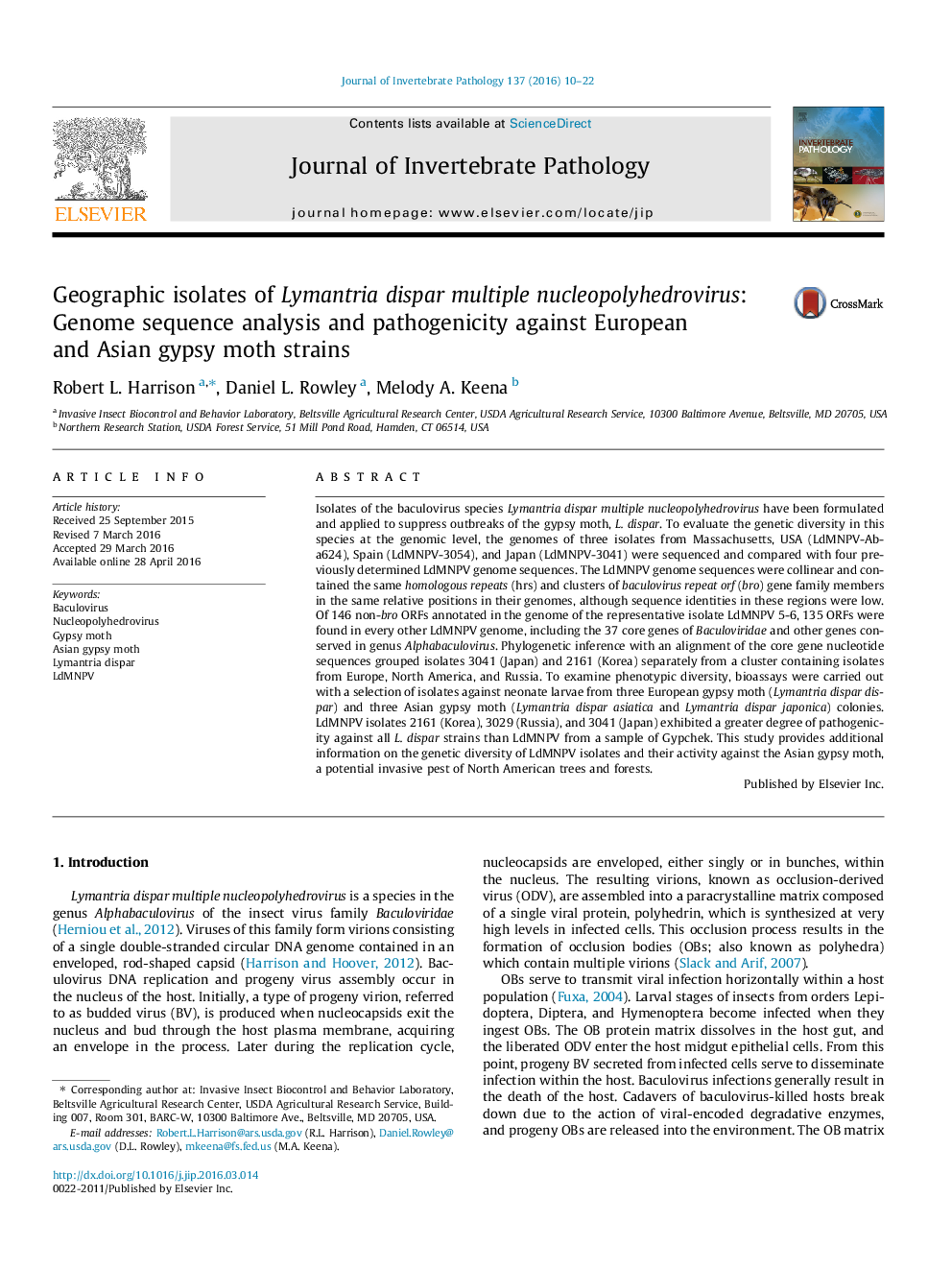| Article ID | Journal | Published Year | Pages | File Type |
|---|---|---|---|---|
| 4557548 | Journal of Invertebrate Pathology | 2016 | 13 Pages |
•Three novel L. dispar MNPV genomes were sequenced, bringing total to seven.•LdMNPV genomes are collinear with minor ORF content differences.•Core gene tree supports LdMNPV divergence into European/N. American & Asian groups.•Gypchek less effective against European and Asian gypsy moth than other isolates.
Isolates of the baculovirus species Lymantria dispar multiple nucleopolyhedrovirus have been formulated and applied to suppress outbreaks of the gypsy moth, L. dispar. To evaluate the genetic diversity in this species at the genomic level, the genomes of three isolates from Massachusetts, USA (LdMNPV-Ab-a624), Spain (LdMNPV-3054), and Japan (LdMNPV-3041) were sequenced and compared with four previously determined LdMNPV genome sequences. The LdMNPV genome sequences were collinear and contained the same homologous repeats (hrs) and clusters of baculovirus repeat orf (bro) gene family members in the same relative positions in their genomes, although sequence identities in these regions were low. Of 146 non-bro ORFs annotated in the genome of the representative isolate LdMNPV 5-6, 135 ORFs were found in every other LdMNPV genome, including the 37 core genes of Baculoviridae and other genes conserved in genus Alphabaculovirus. Phylogenetic inference with an alignment of the core gene nucleotide sequences grouped isolates 3041 (Japan) and 2161 (Korea) separately from a cluster containing isolates from Europe, North America, and Russia. To examine phenotypic diversity, bioassays were carried out with a selection of isolates against neonate larvae from three European gypsy moth (Lymantria dispar dispar) and three Asian gypsy moth (Lymantria dispar asiatica and Lymantria dispar japonica) colonies. LdMNPV isolates 2161 (Korea), 3029 (Russia), and 3041 (Japan) exhibited a greater degree of pathogenicity against all L. dispar strains than LdMNPV from a sample of Gypchek. This study provides additional information on the genetic diversity of LdMNPV isolates and their activity against the Asian gypsy moth, a potential invasive pest of North American trees and forests.
Graphical abstractFigure optionsDownload full-size imageDownload as PowerPoint slide
